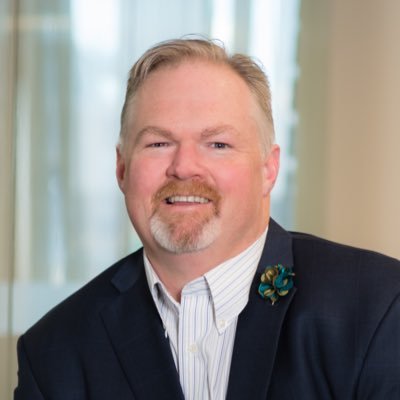Recently-released estimates from Cerulli Advisors suggest Millennials and Generation Z’s wealth jumped by almost a quarter in 2021 as equity markets reached new heights. But how are they doing in a markedly different economic regime, and how much help can financial advisors provide in protecting those gains?
VettaFi contributor Dan Mika spoke with Scott Smith, director of advice relationships at Cerulli, to learn more.
[This interview has been edited for clarity and brevity.]
Dan Mika, VettaFi: Cerulli estimated that millennials and Gen Z’s overall wealth rose from $2.9 trillion in 2020 to$ 3.6 trillion in 2021. What accounts for that jump, especially in comparison to older generations?
Scott Smith, Cerulli Associates: So the thing here is it’s a high percentage of a small base. So equity growth over that period 2020, 20 through 2021 – imagine when we used to have climbing markets?- there was significant equity growth during that period. Because they don’t have a lot of nonequity investments like houses, cars, or real estate, the equity market has the most direct impact on their overall savings in their financial assets, in particular.
VettaFi: So if equities were the main driver for that increase in 2021, what does that say about how their wealth fared in 2022?
Smith: We fully anticipated being in a giveback period at this point for all generations at this point. We’re expecting that with equity and fixed-income markets dropping off significantly, we will have a pullback on overall net worth across age groups at this point.
VettaFi: What’s the advice for advisors trying to bring in these younger clients and keep them around longer, especially if these investors are so heavily tied to the equity markets and don’t have a lot of other types of assets?
Smith: I think the largest challenge you have with dealing with these younger investors is for them to have an addressable asset base, in the traditional model anyway, that can be kind of worked on by advisors. Most investors under age 35 have the bulk of their assets in 401k programs or something else. So there are, in some cases, the opportunity for the advisor to help assist with those. But these investors are kind of in a middle space where they are hungry for advice, but they don’t have these assets (for a) traditional AUM fee-based model. What we see here is a bunch of alternative options emerging. A good example of that is Facet Wealth, where they have an annual fee or retainer fee, and they (charge) that on an annual basis from a couple of thousand dollars. But it’s outside the AUM universe.
The other way we see this is a lot of firms are kind of building these long-term client acquisition funnels, where it’s going from a 401K program to a wealth management platform or when the client when the investor separates service. Or probably the best example of this is a Morgan Stanley program, where they acquired E-Trade, they acquired Solium, that the stock purchase plan firm… These younger investors who are getting stock grants… they ended up with an E-Trade account, and they started asking for advice on what to do with these stock options or stock grants. That can immediately turn the pivot to them becoming wealth management clients as they begin to get vested in these stock programs.
It’s really getting more and more difficult to address this middle space of 25 to 40-year-olds who don’t have huge AUM right now. There are at least alternative models, and trends of providers trying to create lifelong relationships, from, you know, in the case of 401k and from someone’s first paycheck to when they separate service and get rolled over to wealth management IRA program, and they become wealth management clients instead of 401k clients.
VettaFi: Do you think these alternative models will become the norm to cater to this, particularly the millennial generation, as they enter their prime working years with less assets than older generations and are playing catch-up compared to generations that didn’t graduate during the 2008 Financial Crisis?
Smith: I think the challenge here is as a matter of almost stimulating demand, if you will. (Younger investors) want more advice, but they don’t know where to go to get it. If they really try hard, they can find alternative providers, like Facet, or the XY Planning Network, or somebody like that. But in most cases, it’s that they don’t know what they don’t know, and they don’t know where to start looking for it. You end up defaulting to their workplace programs, and in many cases, they’re not getting the high-touch level of advice that someone wants. Most workplace programs are focused on giving guidance. Here’s what someone like you could do if you got married and you’re going to buy a house, you fill in things you want to do, and here’s some things you’d want to think about.
Unfortunately, most people in this situation want customized advice directly from them. Here’s exactly what you should do, given all your facts and circumstances. There’s an advice gap between what these younger investors are looking for and what’s easy for them to get. Unfortunately, it seems like many of them will be kind of spinning their wheels until they get to the level of assets that would get them a traditional wealth management advisor…
In the meantime, it’s a beg, borrow, and steal situation when it comes to advice. They’re trying to use the resources available to them, but there’s not a lot that’s directly custom to the circumstances they’re facing.
VettaFi: In the report, you say that there’s an ad-hoc approach for these younger generations when they’re asking for help about specific financial topics. Do you expect that to continue to be the norm with these generations? Or is this just a byproduct of them starting to build up their wealth?
Smith: I think the ad hoc scenario kind of goes back to, they don’t know where to look. When an emergency situation comes up, they try and figure out what to do with it… They end up using these ad hoc resources, “I’m going to Google it, or I’m going to look it up on TikTok.” You’re not going to find a YouTube video that addresses this particular circumstance. I think the long-term employer-based programs are trying to make themselves where people would look first for answers on these topics. But it’s a matter of being top-of-mind to each client at the right time when they run into these circumstances. I think that’s where we’re going to see the impact of technology moving forward, whether delivering the right content at the right time based on the activities of that individual or greater market conditions. I think investors would prefer to have one resource that they trust, but they just don’t know what that is yet. And hopefully, with lifetime workplace programs or lifetime wealth management programs, we’ll get there. It’s just about getting those clients at breakeven from a revenue versus expenditure perspective. I think that the biggest challenge is having a scalable platform that can give them the advice they need when they’re earlier on in their careers and they need hand-holding. But they just (aren’t) there in terms of being very attractive wealth management prospects.
For more news, information, and analysis, visit VettaFi | ETF Trends.

